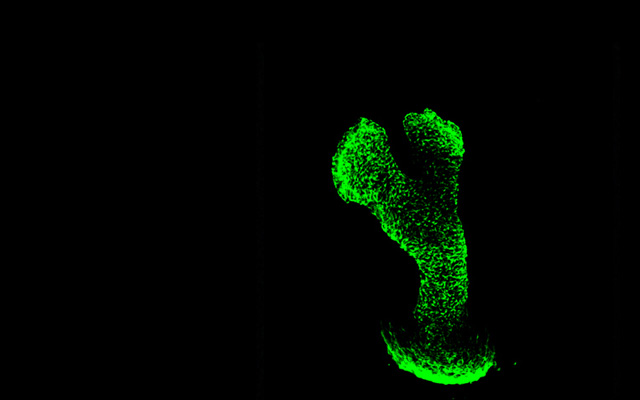OST-B Promotes Lung Cancer Cell Proliferation by Mediating GDF15 Glycosylation Modification
YANG Cui1, DU Mingyuan2, LIU Xinnan1, TIAN Na3, XU Zhan1, LI Hecheng2*, DAI Xueyu1*, LI Bin1*
This study aims to investigate the critical role of OST-B in the glycosylation modification of GDF15 and its impact on the proliferation of lung cancer cells. Bioinformatics analysis and clinical sample validation revealed that GDF15 is closely associated with poor prognosis in lung cancer. Using mass spectrometry to identify protein modification sites and in vitro glycosylation assays, this article confirmed that GDF15 undergoes N-glycosylation at the asparagine residue at position 70. After knocking down GDF15 in the lung cancer cell line A549, this article introduced the synonymous mutant GDF15 wild-type and glycosylation site mutant. CCK-8 assay results showed that the glycosylation modification of GDF15 significantly affects its ability to promote tumor proliferation. Further peptide/protein QE identification and CO-IP experiments validated the interaction between GDF15 and multiple subunits of the oligosaccharyltransferase complex, including RPN1, DDOST, and STT3B. Knockdown of the core catalytic subunit STT3B of OST-B led to a significant decrease in the glycosylated GDF15 protein level, confirming that the N-glycosylation of GDF15 is mediated by OST-B. Moreover, using the protein synthesis inhibitor CHX and the OST inhibitor NGI-1, this articledemonstrated that glycosylation enhances the stability of GDF15. CCK-8, colony formation, and wound healing assays in A549 cells showed that NGI-1 significantly suppressed cell proliferation and migration. Overexpression of GDF15 attenuated NGI-1’s antitumor efficacy, whereas GDF15 knockdown potentiated its inhibitory effects, demonstrating that NGI-1 exerts its antitumor activity through pathways beyond GDF15 regulation. In conclusion, this study reveals that OST-B stabilizes GDF15 through glycosylation modification, and GDF15 plays a key role in tumor cell proliferation. These findings provide new insights and directions for targeted therapy in lung cancer.




 CN
CN EN
EN